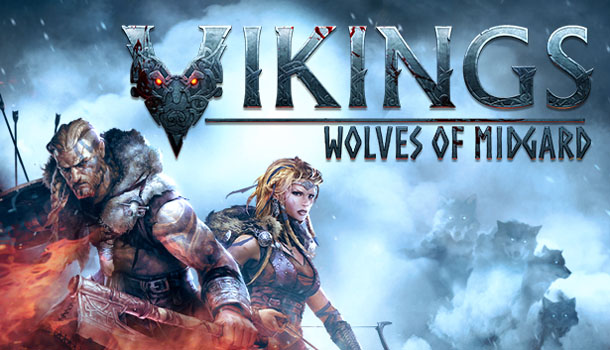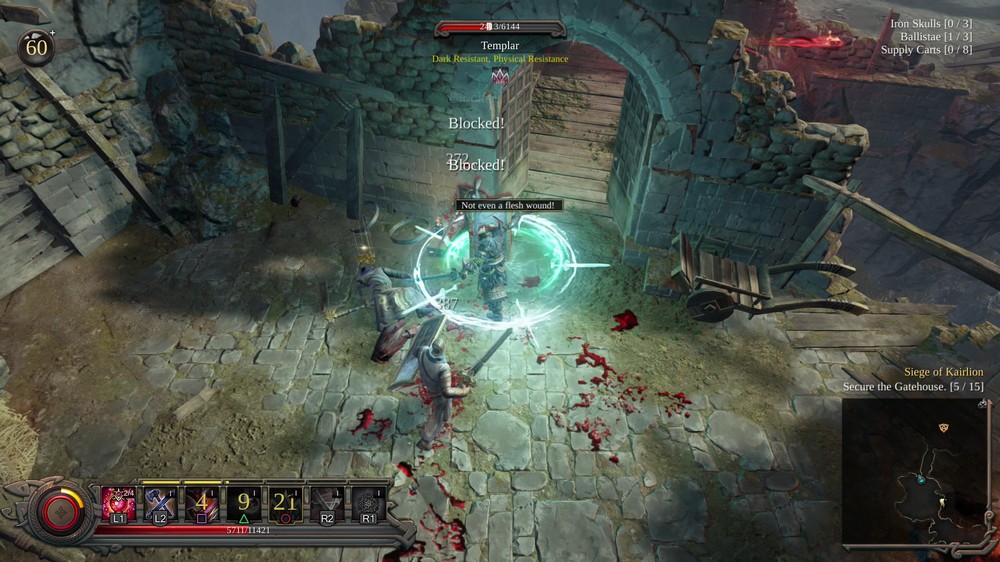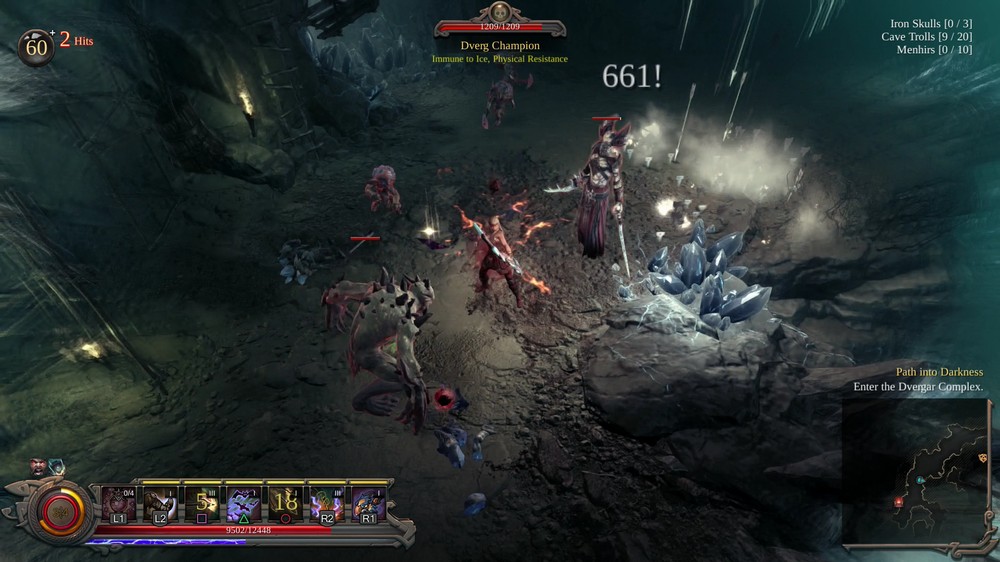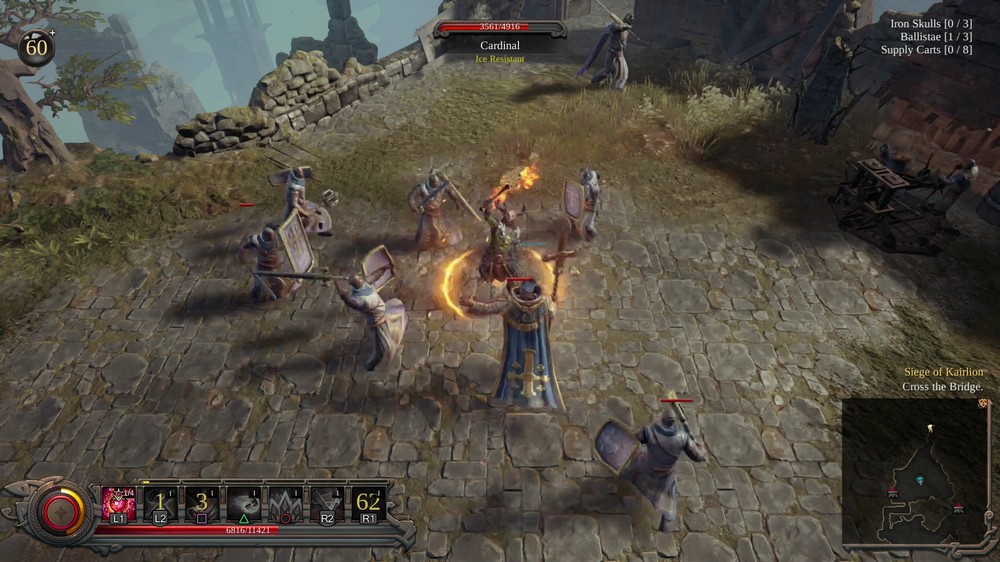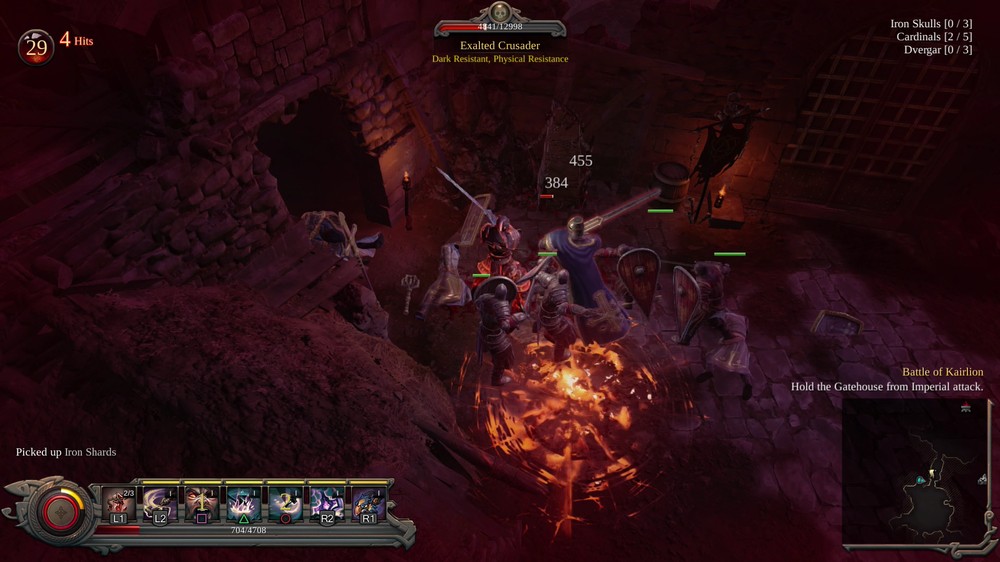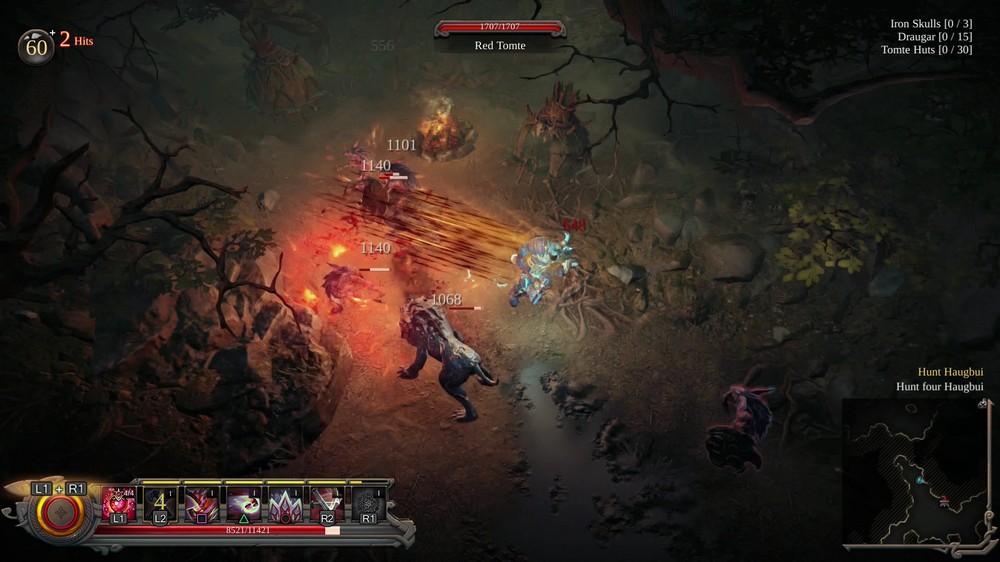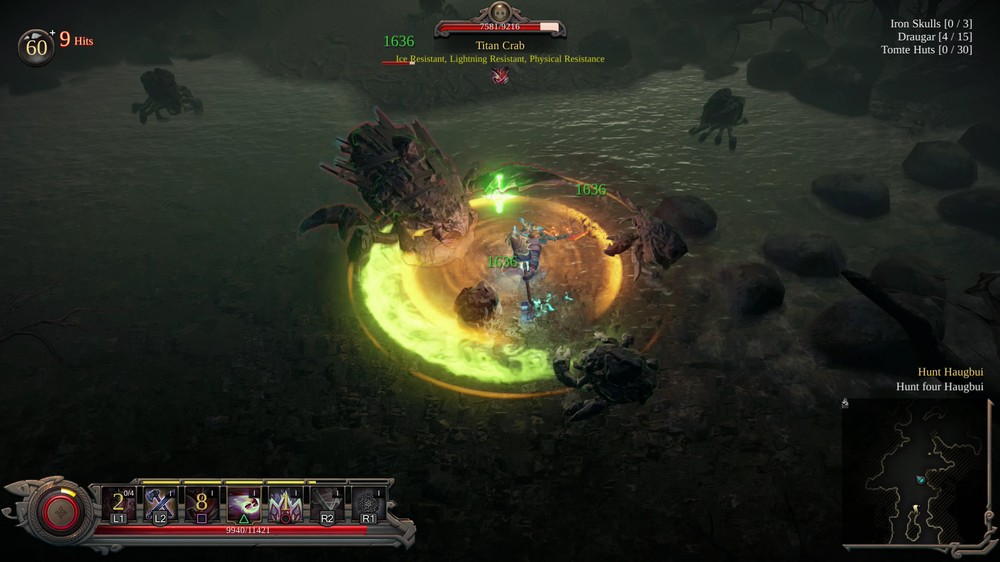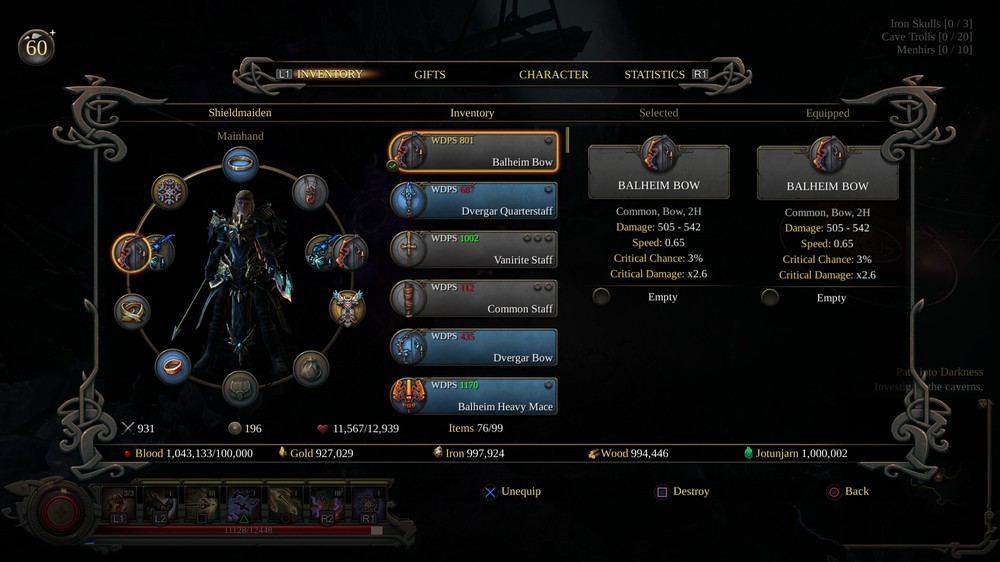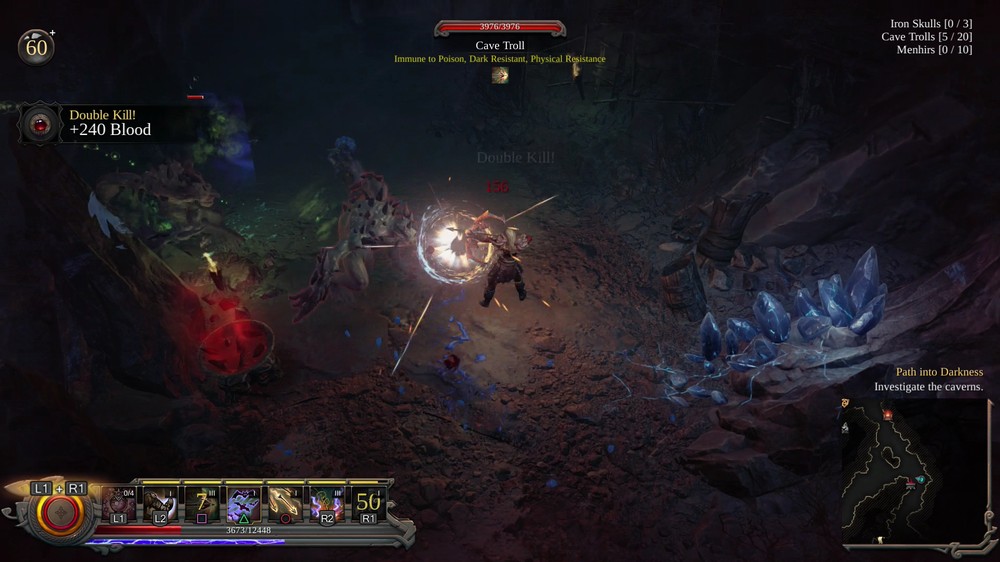I’ve been playing Vikings – Wolves of Midgard for nearly a week now and I may need an intervention if I am ever going to stop. Combining the addictive hack-n-slash, loot-grabbing, role-playing elements of Diablo and infusing that with a healthy dose of Norse mythology, it’s as if the developers were targeting all of my weaknesses with this new action-RPG now available for PC and consoles.
Vikings – Wolves of Midgard magically transports you to the Shores of Midgard where stylized art panels setup the overall story and chapter introductions, and your nimble fingers complete the adventure. You begin by setting up your Viking avatar, either a mighty male Warrior or the just-as-deadly, female Shieldmaiden. One of the more interesting facets of the game is deity selection, mostly because it determines what weapons you start off with as well as certain proficiencies later in the game, as you start to unlock the various Gifts in the skill trees. Some deities only allow for ranged weapons or two-handed weapons while followers of Thor are going to favor the hammer of course.
Interestingly enough, switching weapons in mid-game can also force you to switch deities, thus granting you access to a whole new Gift tree. This can make for some tough decisions. About six hours into my game I got a really awesome staff weapon that did twice the damage of my former 2H axe, but switching to that weapon forced me to leave Thor and convert to Odin. I had to balance the loss of all the work I had put into the Thor Gift set into starting over with a blank Odin tree. It was a risky change but ultimately paid off in the end as Odin had some even cooler Gifts to offer; although, I did miss Thor’s boomerang hammer throw. The nice thing is I can always go back to Thor or any other deity as long as I am using an “approved” weapon.
Vikings – Wolves of Midgard offers a full RPG experience complete with comprehensive character equipment wheel for various weapons, armor, shields, helmets, belts, etc. as well as attribute boosters each time you level up. Interestingly enough, your level progression is based on spilt blood rather than XP, so the more you kill the faster you build your character. Blood is recovered from the battlefield, so in some way you are responsible for looting your own XP. Each new level awards you with Gift points that you can use to unlock deity-specific powers and passive abilities.
The game begins with you clearing out the village that will soon become your base of operations. Once you assume command you can then visit the various shops for armor and weapons as well as the shipwright and the ceremonial blood altar where you level-up. These locations can also be leveled up granting you access to better items and in the case of the altar, greater deity Gifts. As with most games of this genre, the various items are color coded with the traditional colors for magic, unique, and legendary items, and there are even multi-part quest items like a certain bow that comes in five pieces.
Inventory management allows you to destroy non-essential items or break them down for various crafting ingredients. While there is no personal crafting, your armorer and weapons master can only craft from discovered recipes and only if you have the necessary ingredients. There is a nice side-by-side display in the inventory showing what you currently have equipped versus selected items so you know when to switch up.
It’s all standard RPG rules and mechanics behind the scenes, but the game really takes off when you embark on the very first quest. Missions take place on rather large and often complicated maps that can take up to an hour or longer to complete. There are usually three optional quest categories for collectibles/smashables as well as a final mission objective – usually a boss fight. I was impressed with the game’s balance in that if I was doing all the side stuff I was perfectly prepared to do battle with the boss, but if you do rush the levels and head straight to the end you’ll probably be underpowered and have to restart. Once you start a boss fight there is no going back.
The very first mission not only had me going up against wolves, ravens, and assorted undead Jotan creatures; even the icy environments were trying to kill me. An exposure meter slowly increased whenever I was away from a heat source, and if left unchecked would eventually frost my screen and damage then kill me, so there was always this underlying urgency to reach the next campfire, even if it meant sprinting past enemies. Oddly enough, I didn’t like this added level of difficulty at first, but then I missed it on later levels, but there always seems to be some sort of environmental hazard working against you. In one level where you are assaulting a village you begin the mission under the constant barrage of arrows, forcing you to keep moving and tumbling to avoid getting hit.
Controls are excellent with the exception of using the analog stick to navigate the radial inventory menu. It’s super-difficult to get the cursor to stick on any slots at an angle. It would be so much easier to just use the D-pad to cycle around the ring or even better, let me pick items from a master inventory list and have them slotted for me in their proper location. Speaking of inventory, while the game has no encumbrance system you do max out at 99 items at which point you might need to do some housekeeping.
Combat is pure button mashing as you rapid-tap the X button while tumbling with the right stick to avoid taking damage. Your various attacks and abilities are keyed to the controller buttons and shown at the bottom of the screen along with cool down timers on magical abilities. Digging behind the scenes reveals the standard set of DPS rules for your character, weapons, and any mods. There is also nice skill progression for combat that allows you to increase your proficiency with swords, bows, and other weapon classes. As you land successive blows your rage meter will slowly rise until you can unleash a devastating Rage Mode that slows time and boosts damage, often resulting in some cool slow-motion cinematic fatalities.
There are numerous story chapters as well as repeatable missions like the first wolf hunting grounds where you return to grind away for additional blood and crafting loot. Once the story mode is completed you can return in the next life using the New Game+ mode, and there is also the Trials of the Gods challenge mode where you can earn the best equipment and magical runes that can be socketed into weapons and armor. You can also share the adventure in the game’s multiplayer co-op mode.
Rather than a drop-in co-op mode you’ll need to access multiplayer through a separate entry off the main menu where you can choose online (open/private) or LAN options. There is no local/couch co-op, so those hoping for a two-player Gauntlet clone will need to look elsewhere. While having a friend (or even a stranger) tag along as backup can be fun there are a few downsides to the co-op experience. First off, none of the mission progress is saved for the player joining the game, so only the host benefits. Ultimately, this means that when the co-op player returns to his own solo game they are generally too high a level for where they may have left off in their own game. To that end it is best to have a separate character reserved for online gaming.
Additionally, the game doesn’t seem to scale the difficulty for the extra player, so what was once a moderately challenging game for one is now a cakewalk; even the boss fights. Plus there is virtually no interaction between the players other than chatting while you furiously mash the X button. You cannot heal each other or exchange inventory items, and player two is unable to perform any upgrades to their facilities at their home village, since they are existing in the host’s session. There are no two-player puzzles and the only thing that really requires a true co-op effort is occasionally pairing up inside rings to open a door to a new area or final boss. At least there is no friendly fire, so you don’t have to be too careful when firing a bow or swinging an 8-foot blade. While co-op is often an added-value proposition in games like this, it just seems kind of tacked on in this case.
Vikings – Wolves of Midgard looks fantastic on my PS4 Pro, and while much of the detail is lost in the default camera you can always zoom in with a tap of the D-pad to get a close-up, although I found this view too restricting for long-term gameplay. There is some gorgeous environmental art and the character designs with all the assorted equipment are loaded with detail; especially the awesome tattoos. Animation is pretty basic for running and combat, but there was a noticeable weight to the larger weapons that affected and slowed down the attack animations. Lighting, shadows, and other effects like water and the frosting of your screen were excellent.
The voice acting is above average with a few exceptional standout characters. Some of the dialogue is a bit too modern, but I did laugh out loud when my Shieldmaiden used “Odin’s Crotch” as an exclamation. Most of the speech comes from the narrator and the occasion musings of the various townsfolk. The only problem I had with anything in the mix was the shipwright in my town whose voice was so soft I had to read the subtitles to “hear” anything he was saying. Characters in other outdoor locations also spoke at levels too low to hear. The music was awesome and fit perfectly with the Norse adventure theme of the game. Even the menu music is pleasing, which is nice because you spend a lot of time in those equipment screens.
While I have only played with two characters up to this point I am definitely looking forward to trying some other Deity variations and weapon proficiencies just to see how much the game changes based on those variables. Even dabbling with only three of the deities has been an enlightening experience, and the core gameplay is fun enough to revisit in that same sort of Diablo addiction I had a few years ago. Plus the Trophies are almost cruel in the amount of time you’ll need to spend as you try to unlock every Gift in every deity tree as well as complete the game as both Warrior and Shieldmaiden, as well as the brutally difficult Valhalla mode.
Vikings – Wolves of Midgard is the perfect slash-and-loot game for anyone who loves Norse/Viking lore or just enjoys a slick Diablo-inspired action-RPG with plenty of gib-splattering violence and lots of visually stunning and often deadly environments to explore, and pillage. I’ve been hopelessly addicted for a week and can see many more ahead of me, as I try to save Midgard from complete annihilation.
Review Update April 6, 2017
After continued gameplay past our initial review we have come across numerous game-breaking bugs and glitches in the game; things like collectible counters resetting in mid-mission forcing a complete restart of a chapter and losing hours of progress. Additionally, there are numerous issues and limitations with the co-op portion of the game; things like the guest player not having their mission progress saved and being unable to upgrade their village during co-op play. After further review we have adjusted our score and removed the editor’s choice award.

